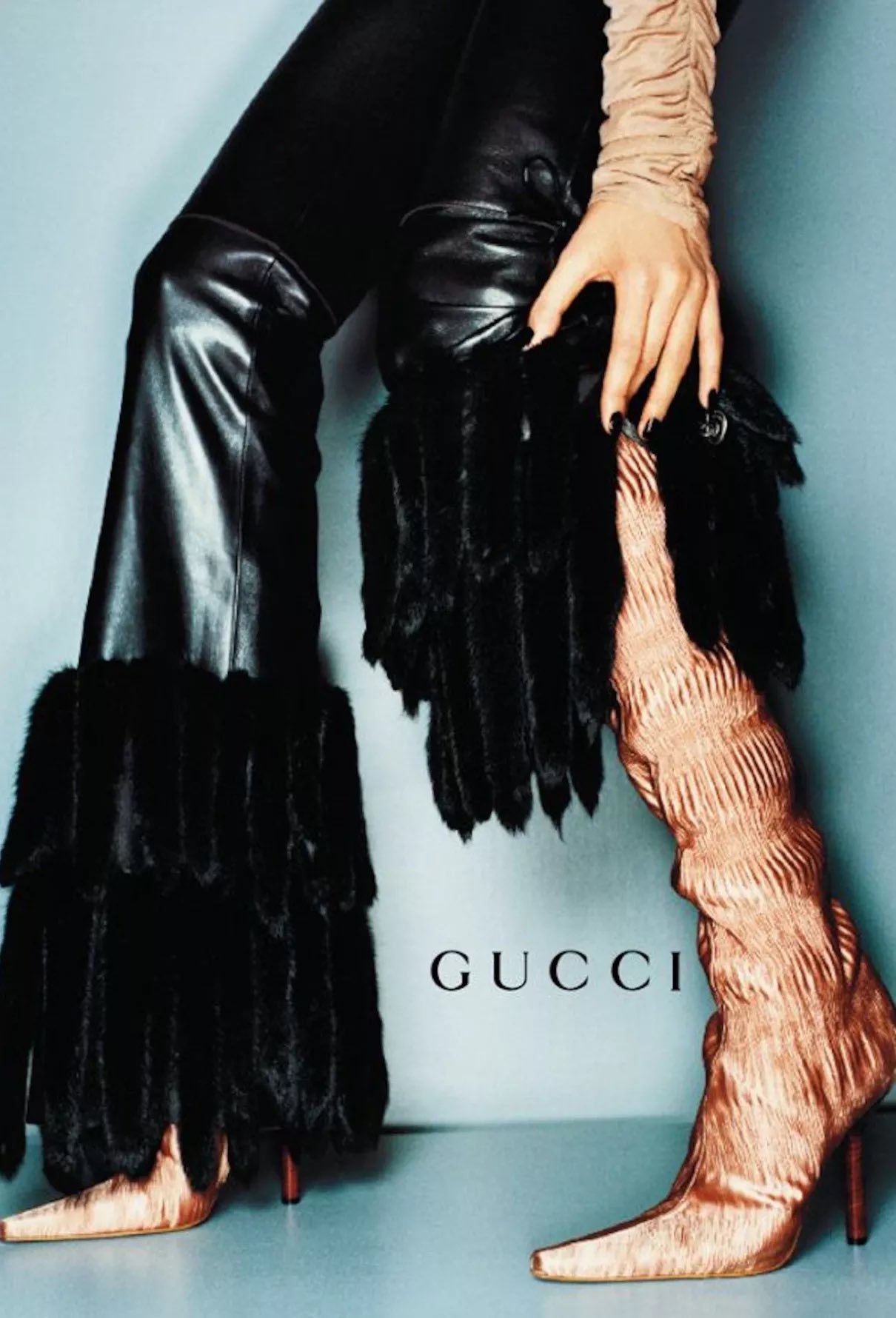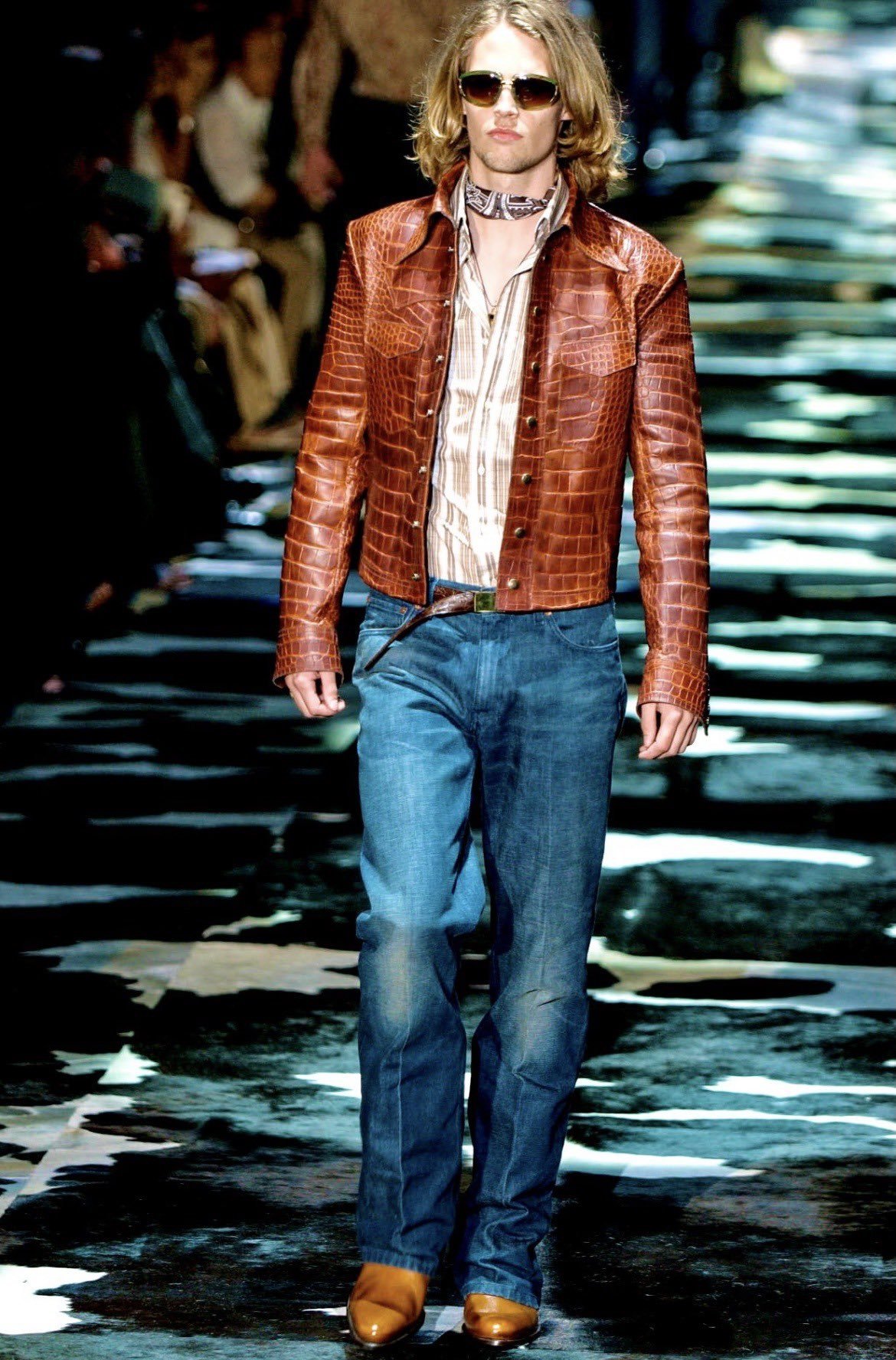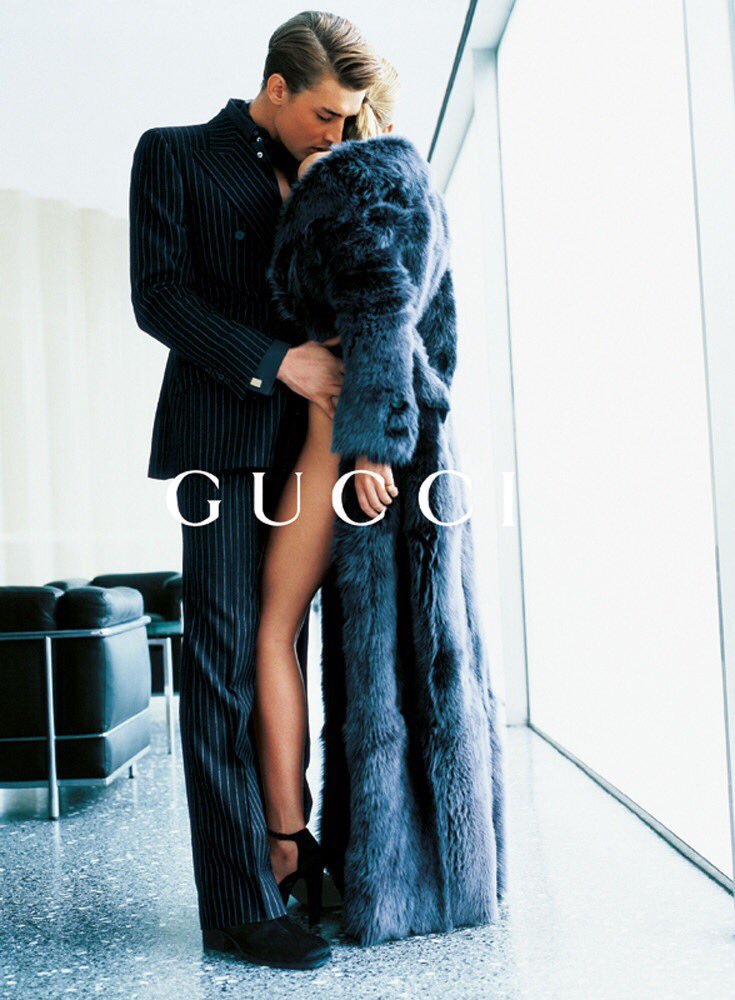Gucci’s Tom Ford Era
Tom Ford’s rise in fashion began when he studied architecture at Parsons School of Design in New York. After a short stint with American designer Cathy Hardwick, he made his way into the fashion industry in 1990, joining Gucci as a design director in its women's wear department. At the time, Gucci was in a financial crisis, with outdated products and a lack of direction. The brand was known for its classic, traditional designs but had lost relevance in the fast-evolving fashion industry.
In 1994, Ford became the creative director of Gucci, a role that would change both his career and the trajectory of the brand. He inherited a house that was struggling to find its footing in the market. Gucci was stuck in the past, relying on its heritage but failing to adapt to the desires of a new, more fashion-conscious audience. Ford quickly recognized that the brand needed to evolve into something younger, fresher, and more daring to make a significant impact.
Ford’s first collection for Gucci was Fall/Winter 1995. The show shocked the fashion world for its boldness and sharp sensuality. The collection featured a mix of sharp tailoring, sleek leather, and daringly low-cut silhouettes that challenged conventional notions of luxury. Ford infused Gucci with an air of modernity and confidence, focusing on sexual allure and the idea of "provocative luxury." His use of bold colors, bold shapes, and skin-baring designs struck a chord with the fashion world, and critics quickly recognized that Gucci was undergoing a complete transformation.
Throughout the late ‘90s, Ford became known for his ability to merge Italian luxury with a distinctly American sex appeal. His collections consistently pushed boundaries, both visually and conceptually. The Spring/Summer 1996 collection, featuring skin-tight leather pants, slinky dresses, and gold metallics, was one of the turning points for Gucci. The show attracted attention for its sensuality, making a statement about the power of sexuality in high fashion.
Ford didn’t just change Gucci's design direction; he understood the importance of branding and image-making. He used provocative marketing campaigns that featured striking images, often starring some of the era’s most iconic supermodels, like Kate Moss, Naomi Campbell, and Amber Valletta. These advertisements became synonymous with the brand’s new identity: bold, confident, and unapologetically sexy.
Ford’s influence extended to Gucci’s accessories, particularly handbags and shoes. The “GG” logo, which had been seen as outdated, became reworked into a modern, desirable symbol, and accessories like the bamboo-handled handbag became status symbols. These items quickly became must-haves for fashion-forward consumers. His work helped reposition Gucci as not just a fashion label, but a lifestyle brand.
The most iconic collections of Ford’s era include Spring/Summer 2000, which solidified Gucci's place as a leading luxury brand. The collection was full of metallics, sequins, and slinky fabrics, blending high fashion with a strong sense of street-style glamour. Ford’s runway shows in the late ‘90s and early 2000s were known for their theatricality, with dramatic music, strong lighting, and models strutting in skin-baring outfits. The combination of the clothing and the atmosphere created an unparalleled aura of luxury and desirability.
By the time Ford left Gucci in 2004, the brand had been transformed into one of the most powerful and profitable names in fashion. Sales soared from $230 million in 1994 to over $3 billion by 2003. Ford’s creative vision had not only saved the brand but had made it a symbol of luxury and modern style for a new generation.
However, Ford’s departure was a result of growing tensions with Gucci’s parent company, PPR (now Kering). Disputes over the control of the creative direction and compensation led to his exit after his contract expired. Ford's departure marked the end of an era at Gucci, a brand that had been completely redefined under his leadership.
After leaving Gucci, Ford went on to launch his own eponymous brand in 2005, which expanded beyond fashion to include beauty, eyewear, and fragrances. His success at Gucci had proven his unique ability to create an entire fashion ecosystem. Even after his departure, Ford’s influence on Gucci remained clear, with the brand continuing to be a force in high fashion, though his personal impact would be felt most strongly in the legacy he left behind.
Tom Ford's time at Gucci not only saved a struggling brand but also redefined the concept of luxury and modern fashion. His approach to sensuality, design, and branding turned Gucci into a global powerhouse and set the stage for many of the trends that would define luxury fashion in the years that followed.
Photo Usage Disclaimer
I do not claim ownership of the photos featured in this article unless explicitly noted. All images are either sourced from public domains, licensed platforms, or credited to their respective owners. Additionally, I do not receive any compensation for the use of these images. If you are the rightful owner of any image and have concerns about its use, please reach out, and I will address the issue promptly.
Photo Credits:
https://www.instagram.com/explore/search/keyword/?q=gucci%20tom%20ford





